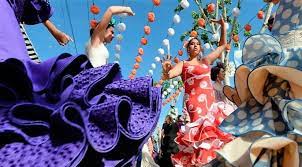
Introduction
Europe, a continent steeped in history and culture, boasts a dazzling array of festivals and celebrations that capture the essence of its rich heritage and diverse traditions. From grand spectacles that date back centuries to modern fêtes that reflect contemporary creativity, Europe's festivals are a testament to the enduring spirit of community, joy, and unity. This article delves into the kaleidoscope of Europe's festivals, highlighting how they intertwine tradition and diversity in captivating ways.

Europe's festivals serve as a living tapestry of cultural heritage, carrying forward customs that have been cherished for generations. Spain's "La Tomatina," for instance, transforms the streets into a sea of tomatoes, echoing a tradition that has been observed since 1945. The Running of the Bulls in Pamplona, another Spanish tradition, combines daring with history, commemorating the city's patron saint, Saint Fermin.
Similarly, Italy's Venice Carnival traces its roots to the 12th century and remains an exquisite display of opulence and masquerade, where attendees don elaborate costumes and masks to partake in a lavish celebration. These festivals not only honor history but also provide a tangible link to the past, reminding the younger generations of their ancestors' way of life.
While many European festivals have deep historical ties, others are newer but equally significant in showcasing the continent's diversity. Notting Hill Carnival in London, a vibrant celebration of Caribbean culture, is a prime example. Started in 1966, it has evolved into Europe's largest street festival, a testament to the multicultural dynamism of modern Europe.
Likewise, the Berlinale, Berlin's International Film Festival, highlights diversity through the lens of cinema. By featuring films from various cultures and backgrounds, it promotes cross-cultural understanding and fosters unity among nations, all while embracing the universal language of storytelling.
Europe's festivals often bridge the gap between tradition and modernity, creating unique and captivating experiences. In Sweden, Midsommar is a centuries-old festival that celebrates the summer solstice. Traditional dances around the maypole and flower crown weaving are juxtaposed with contemporary elements like music festivals, seamlessly blending old and new.
Germany's Oktoberfest, one of the world's most famous festivals, is a testament to the fusion of tradition and modern entertainment. While deeply rooted in Bavarian culture, it now attracts millions with its bustling beer tents, amusement rides, and international attendees, making it a global celebration of camaraderie and joy.
European festivals also adapt to changing times, embracing innovation while retaining their core values. Spain's La Mercè Festival in Barcelona exemplifies this, combining age-old traditions with modern artistic performances, digital displays, and interactive installations. This fusion of the traditional and the contemporary ensures that these festivals remain relevant and engaging for younger audiences.
Europe's festivals and celebrations offer a panoramic view of its past, present, and future. From venerable events that have persisted through centuries to contemporary gatherings that celebrate the vibrancy of multiculturalism, these festivals embody the unity of diverse cultures while honoring their unique legacies. They stand as living testaments to the power of tradition, diversity, and the enduring human spirit. So, whether you're dancing in the streets of Seville during La Feria or marveling at the Northern Lights during the Jokkmokk Winter Market in Sweden, Europe's festivals are an invitation to experience the beauty of unity in diversity.